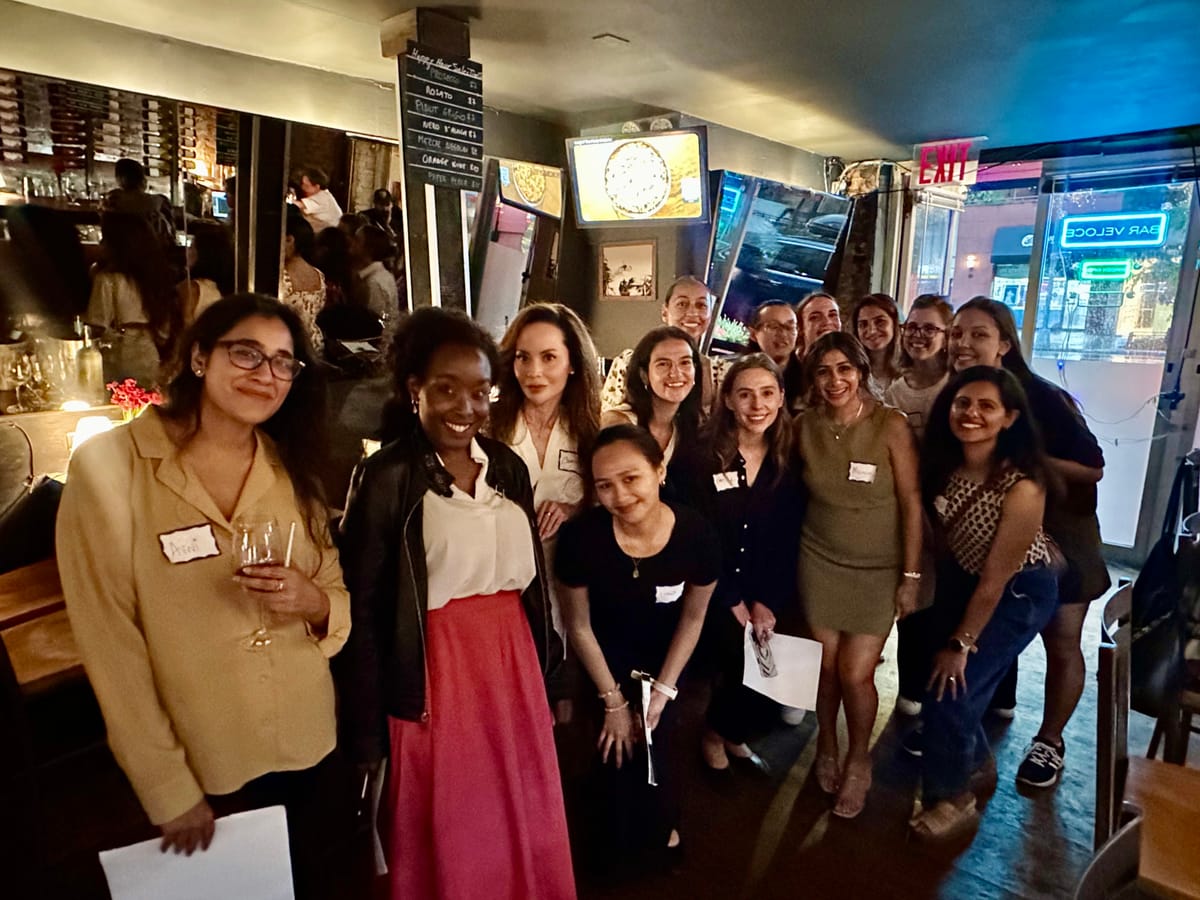How to Build Authentic Community: A Framework for Organizing High-Impact Networking Events

When the Acquired live event was announced, the excitement in the community was real. But I noticed a common thread quickly emerging—most people, including myself, were planning to attend solo. When I saw a message in Slack asking if any women were interested in going together, it sparked an idea: what if we created a space for women to connect before the event?
What started as organizing a simple pre-meetup for women attending the Acquired show became a masterclass in community building. I walked away not just with new connections, but with a systematic framework for creating networking events that generate authentic relationships.
Here's the framework I developed for creating an event that actually work—and the concrete takeaways you can use to build authentic connections in your own community.
Strategic Planning: Data-Driven Event Design
The Foundation: Smart Data Collection
Before diving into logistics, I created a comprehensive Google Form to understand exactly what attendees needed. This wasn't just basic RSVP data—I collected enriched information that shaped every aspect of the event:
- Professional background and seniority level
- What type of connections they were seeking
- Specific goals for attending
- Preferences for event format and activities
Why This Matters: Most networking events fail because organizers make assumptions about what people want. By collecting detailed data upfront, I could design an experience that met the actual needs of my audience, not what I thought they needed.
The Results Spoke Volumes:
- 92% wanted to connect with other women in their field
- 76% specifically wanted to meet people before the main event
- Only 8% were job hunting (challenging the assumption that networking = job seeking)
Execution Excellence: Removing Barriers to Connection
Venue Selection Strategy
Chief is home to events I've hosted in the past, and it was fitting, as it's a professional network for executive women. Unfortunately, the room we usually book was taken, so we had to look elsewhere. I landed on a bar with a setup that encouraged conversation and intimate connections.
Budget as a Strategic Tool
I covered the entire cost of drinks and light bites. This wasn't just hospitality—it was removing a strategic barrier. When people don't have to worry about cost, they focus entirely on connecting.
The Framework in Action
- Identified the real barriers to attendance (cost, intimidation, not knowing anyone)
- Systematically eliminated each barrier through thoughtful planning
- Created an environment where authentic connection was the path of least resistance
Content Strategy: Structure That Enables, Doesn't Constrain
The Goldilocks Principle of Event Programming
I developed a Human Bingo card with industry-specific prompts—just enough structure to break the ice, but not so much that it felt forced. The key insight: people sometimes need encouragement to start conversations, but they don't need you to script them.
What I Learned: The bingo cards were a hit because they gave attendees a reason to approach strangers and revealed natural conversation starters. People's competitive sides emerged organically, creating energy without forced enthusiasm.
The Numbers: Measuring Success Beyond Attendance
Attendance Metrics That Matter
- 25 signups → 18 attendees (72% attendance rate)
- Industry benchmark for professional networking: 60-80%
Demographic Breakdown
- 32% Managers, 26% Directors, 16% VPs
- Heavy consulting representation (28%), followed by finance and product
- 68% mid-to-senior level professionals
Strategic Insight: While our demographic didn't perfectly mirror the broader industry event audience, it created a cohort with similar professional challenges and growth trajectories—exactly what made for meaningful connections.
Post Event: Turning Moments into Momentum
Immediate Follow-Through
The real magic happened after the event. I created a WhatsApp group to maintain connections and watched as attendees immediately began planning future meetups independently. This is the mark of successful community building: when participants take ownership and drive future engagement.
Feedback That Validates Strategy:
- "Thanks for creating the group. Fun meeting everyone yesterday."
- "It was so great meeting everyone and can't wait for more hangouts."
- "So nice meeting everyone. See you tonight!"
- People were making concrete plans to meet again before leaving
Key Takeaways: Tactical Takeaways for Your Next Event
Pre-Event:
- Collect enriched data through detailed forms—don't just ask for name and email
- Budget for full experience coverage to eliminate financial barriers
- Choose venues that facilitate conversation over impressive backdrops
- Plan structured ice-breakers that feel natural, not corporate
During Event:
- Give people permission to connect through light programming
- Stay flexible—if organic conversation is flowing, don't force structured activities
- Be present but not controlling—your job is to enable, not manage every interaction
Post-Event:
- Create ongoing connection channels (WhatsApp, Slack, etc.)
- Let the community self-organize for future activities
- Document what worked for future iterations
The Bottom Line
Authentic networking happens when you remove barriers, provide just enough structure to get conversations started, and then get out of the way. This framework has applications far beyond single events—it's a blueprint for building the kind of professional community that actually creates lasting value.
The question isn't whether this approach works. It's how you'll adapt it to create meaningful connections in your own professional ecosystem.
Bonus: Check out Boris's post on lessons he learned from leading the charge on the NYC fan-organized events.